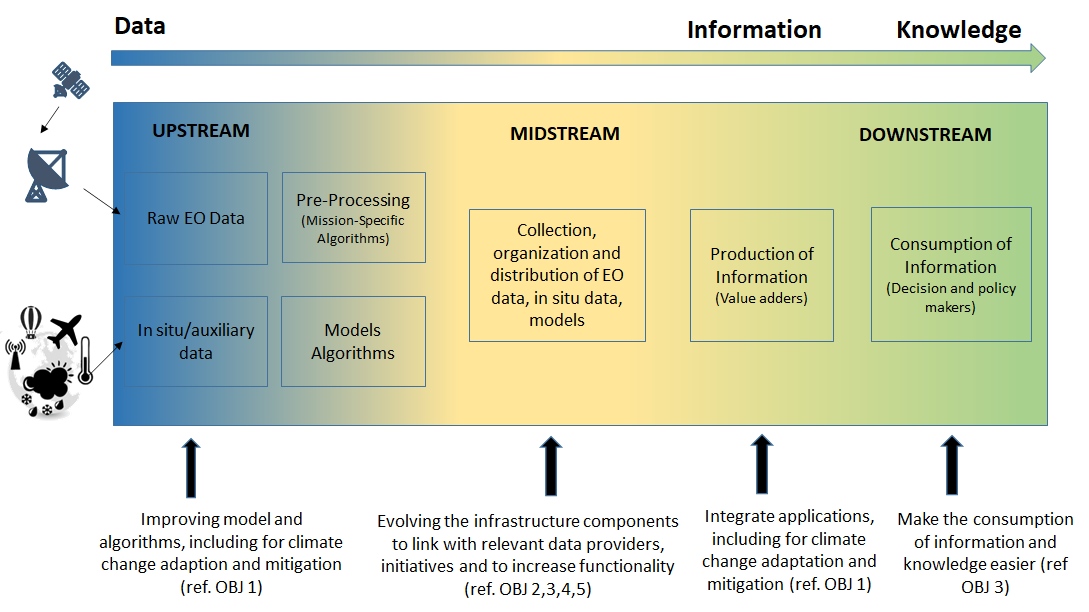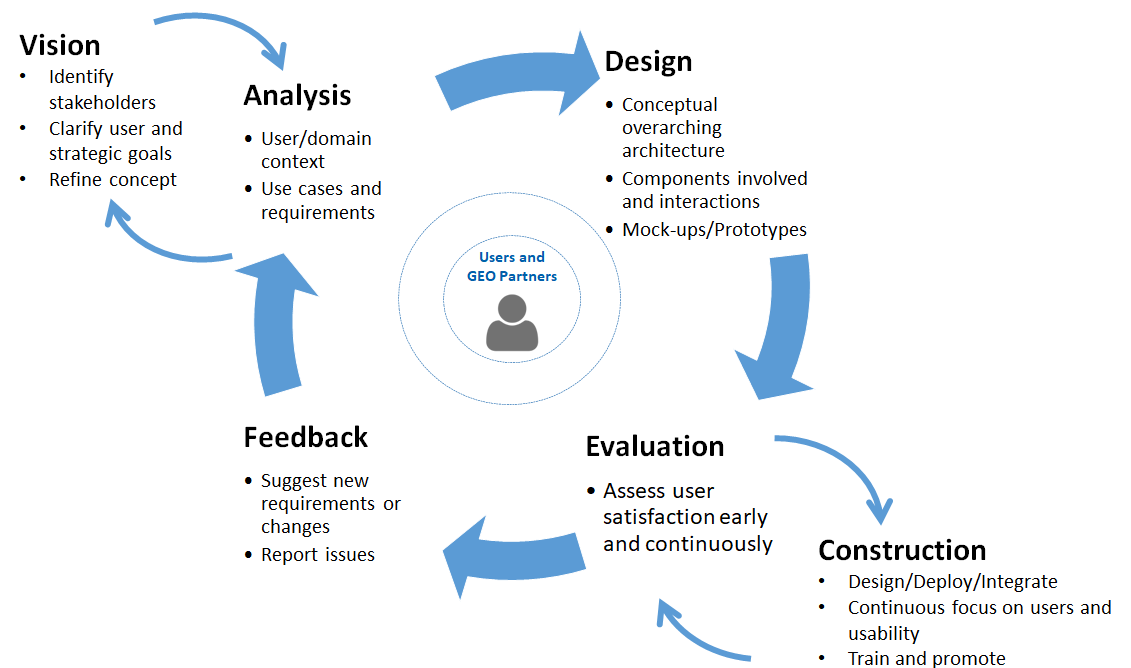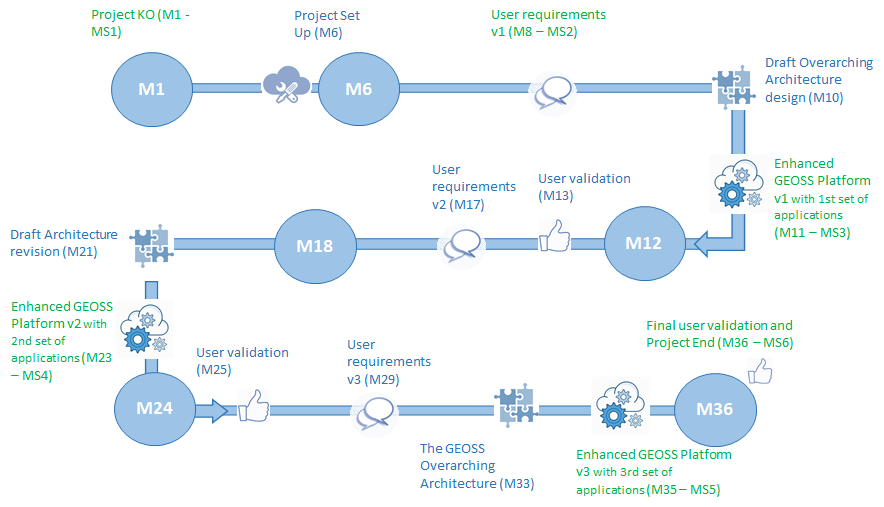Concept
GEOSS Platform Plus supports the full data value chain from acquisition to knowledge via the GEOSS Platform, as part of the midstream layer. It enables access and exploitation of, in particular, EO data made available by providers, in a way that they are easily exploitable by applications to produce useful and actionable information for final consumer.

GPP collects user needs and bridges gaps with new, improved capabilities. It supports production of information by linking selected applications and delivers the resulting actionable, ready-to-use knowledge to interested users. A contribution to the upstream layer is foreseen via evolution of models and algorithms, e.g. for Sustainable Development Goal 15.3.1 Land Degradation.
Approach
GEOSS Platform Plus adopts a stepwise, user-centric approach, combined with an evolutionary, both iterative and incremental, system development methodology. Continuous involvement of users will ensure that user needs are well-understood and solutions respond to what the users actually need. The adopted incremental and iterative system development methodology ensures timely responses to evolving user needs through progressive gathering of user needs, incremental and iterative implementation of corresponding solutions and the interactive involvement of users during evaluation and assessment processes.

Stakeholders are identified and engaged in the project. Their objectives are identified by means of high-level scenarios. This serves as starting point for a deeper analysis of the context of use and for a more detailed specification of use cases and requirements. These, in turn, are input to the design of solutions. Mock-ups and prototypes are used continuously to challenge and evaluate ideas and design solutions in cooperation with the stakeholders. Their satisfaction as well as the usability criteria shall always be kept in mind in the evaluation process. This can result into suggestions for changes or consensus for the construction and integration. The deployed solution is evaluated in terms of usability and user satisfaction. Changes can be suggested based on the outcome of the evaluation.
The user-centric approach identifies five work packages: WP1 oversees the project Vision and keeps it up-to-date; WP2 defines the user context and drives the Analysis aspects, WP3 regards Design and Construction (this latter also involves WP5), while WP4 is responsible for the Evaluate and Feedback aspects.
Roadmap
The Project envisages three cycles of innovation, with a first set of requirements expected at M8 (Project Milestone MS2) and the corresponding set of applications identified and adapted at M9. A first version of the overarching architecture design is expected at M10, while an important milestone is planned in correspondence of GEO Plenary 2022 (presumably at M11, i.e. November 2022, assuming the project KO in January 2022), where a first evolution of the Platform integrating the first set of identified applications will be demonstrated. The Platform will then be enhanced through two additional cycles, and two additional sets of applications, according to the timeline depicted below.

The Project foresees six milestones and frequent incremental releases in between, that, as already discussed, have the purpose to ensure quick response to evolving and new user requirements.
Three GEO Plenaries are expected to be overlapping with the project lifetime and are considered the best opportunities for demonstrating the enhanced GEOSS Portal (and the GEO-DAB and the other components empowering it). During these events, feedback on user experiences with the newly enhanced Platform and integrated applications will be gathered. Towards these formal demonstrations, all the GEOSS Platform are continuously evolved during the project.